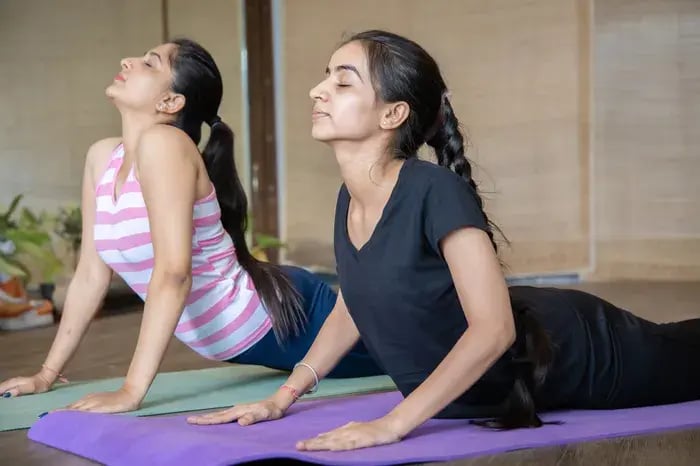Introduction
Today, it seems like many children are on a screen much of the time—hours are spent in front of the television, smartphones, or video games. Preteen parents face the challenges of trying to keep their young kids active, yet an active lifestyle is imperative for overall health and well-being. The encouraging part is that fitness-friendly living can be adapted with minor tweaks. Engaging kids in fun activities, offering them the right environment, and giving them a positive example will lead to the embracing of an active lifestyle by the children. According to a study, kids engage in more physical activity when they have a sense of enjoyment and when there is family participation. Here are 9 practical ways to make your home a space that encourages fitness for preteens.
Involve them in fun activities
Children are more likely to stay active when they enjoy the activity. Find out which activity your child enjoys, it could be dance, cricket, badminton, or cycling. Let your child decide about the sport in which he finds pleasure and continue it regularly in his daily schedule. Conduct match practice with siblings or other neighbor children. As long as fun is associated, they are not going to neglect an active life.
Involve the Whole Family
A fitness-friendly home begins with family participation. Plan weekend treks, morning walks, or evening badminton games to encourage movement. Indian families can include cultural activities like folk dancing or playing gully cricket. When parents and siblings join in, children see fitness as a fun family activity rather than a chore. Family involvement not only promotes physical activity but also strengthens bonds.
Select Appropriate Exercises
Children at the preteen age stage require suitable exercises that cater to their physiological stage. Avoid intense running and weightlifting since it may prove detrimental to the young growing bones and muscles, but skipping, swimming, cycling, and group games are some recommended exercises. Participate in school sports or in the local clubs as well, thus ensuring they get the right balance of exercise while avoiding activities that could strain their growing bodies
Plan a Routine and Set a Fixed Exercise Time
Incorporate physical activities into your child's regular routine just like any other study time or meals. Set specific time to play or exercise, such as 30 minutes after school or an hour before dinner. When fitness becomes a habit, children are more likely to continue practicing it. Planning ahead ensures them of always having time for exercise amid their studies and other extracurricular activities.
Provide a Safe and Comfortable Place
A space is required for the child to physically exercise. Choose an area in the house or an open space of the house, such as a terrace or courtyard, or even a park nearby, for the child to exercise. All sports equipment like shoes, helmets for bicycles, and safety pads should be sound. The proper attire is also a necessity, as it ensures that the child can move around freely during exercise.
Active Toys and Equipment

Engage the child in fitness with age-appropriate active toys. Simple items like skipping ropes, hula hoops, basketballs, and cricket bats encourage movement. A small indoor trampoline or a punching bag can keep children active indoors. Investing in such items may help preteens find fun in movement and stay engaged in physical activities at home.
Be a Role Model for an Active Lifestyle

Children learn by observing their parents. If they see their parents' prioritizing fitness, they are more likely to adopt similar habits. Set an example by practicing yoga, going for walks, or engaging in sports yourself. Join your child in their fitness activities—this not only motivates them but also makes workouts more enjoyable and less of a task.
Limit Screen Time and Encourage Movement
Reducing screen time is key to ensuring kids stay active. Set daily limits on TV, gaming, and phone usage, and replace that time with physical activities. Encourage active breaks, if your child watches TV, use commercial breaks for quick stretches or jumping jacks. Making screen-free time a rule ensures that movement becomes a natural part of their routine.
Avoid Overloading and Encourage Rest

While fitness is essential, overexertion can cause burnout and injuries. Ensure your child is not overloaded with too many activities. Balance exercise with rest and relaxation. If they complain of pain or fatigue, let them slow down and opt for gentler activities like yoga or light stretching. Keeping a balance between activity and recovery helps maintain a healthy and sustainable fitness routine.
Deepali Verma is a senior food and wellness writer with over a decade of experience in top media houses, crafting engaging narratives. She is a professional home baker and loves exploring food from every corner of the world to reading cookbooks. She believes a healthy lifestyle is a combination of mental, spiritual and physical fitness. Her goal always remains to keep moving, eating seasonal and practicing gratitude.
The views expressed are that of the expert alone.
References
https://www.familytimefitness.com/creating-a-healthy-home-environment/
https://kangaroocareindia.com/blogs/how-to-encourage-your-child-to-be-physically-active/64
The information provided in this content is for informational purposes only and should not be considered a substitute for professional medical advice, diagnosis, or treatment. Always seek the advice of your physician or another qualified healthcare provider before making any significant changes to your diet, exercise, or medication routines.










